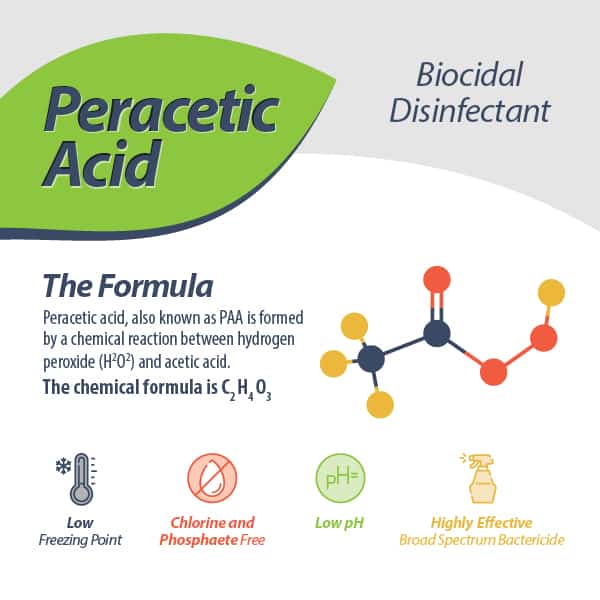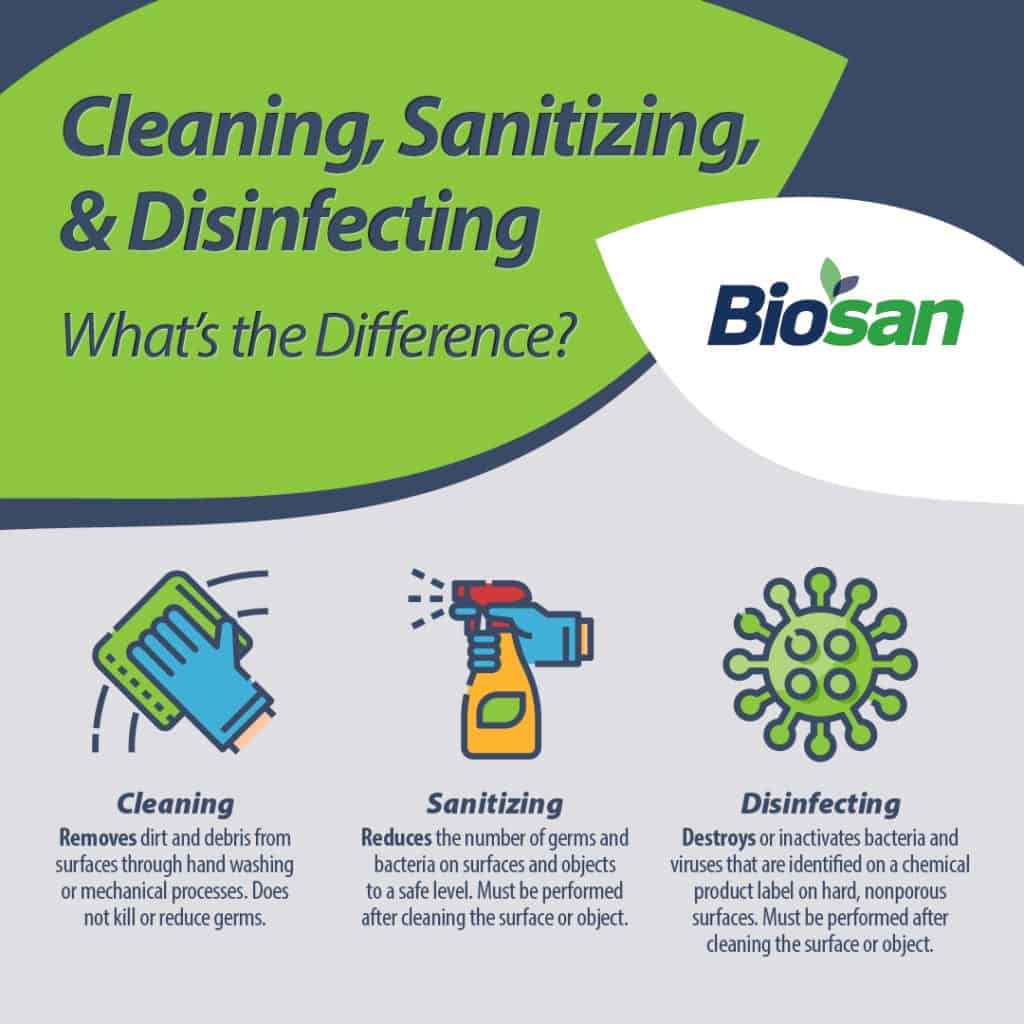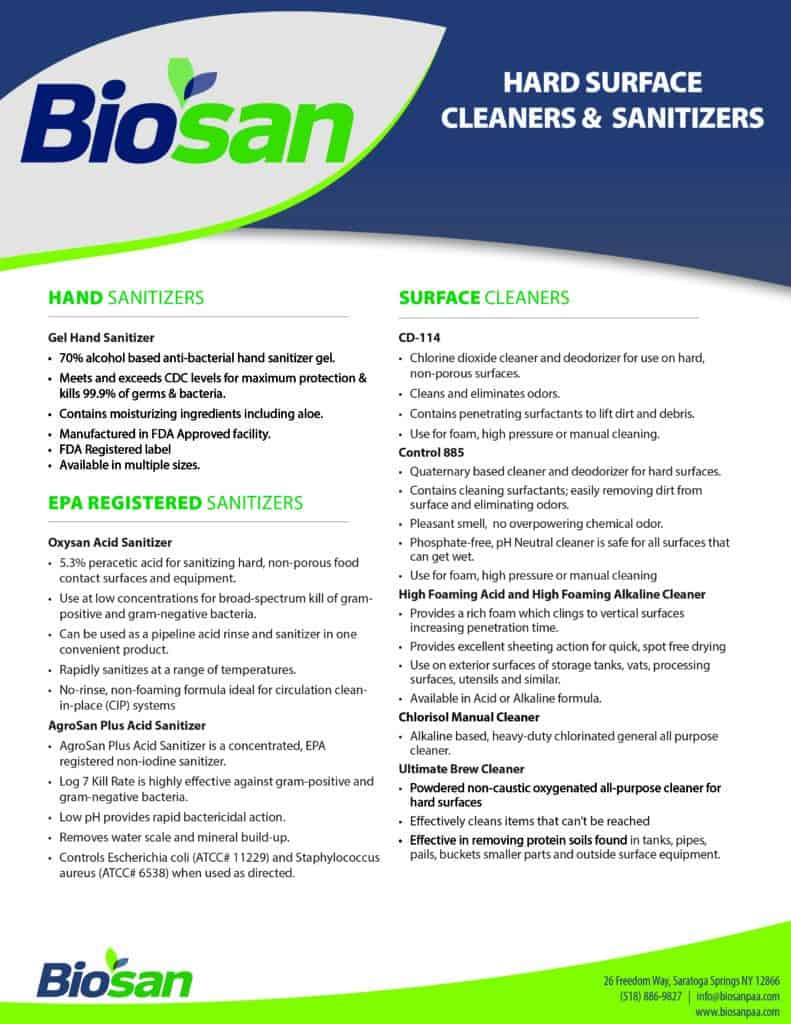Peracetic Acid, also known as peroxyacetic acid or PAA, is an organic chemical compound (CH3CO3H) that is created by a chemical equilibrium reaction with acetic acid and hydrogen peroxide in water. It is a colorless liquid that has a strong vinegar like odor that can be experienced at very low levels. It is a strong oxidant and is highly reactive. However, it breaks down to acetic acid (vinegar) and water leaving no harmful residue, which makes it the chemical of choice when looking for an environmentally safe antimicrobial product.

Since peroxyacetic acid (PAA) is an equilibrium product, it can be formulated to have varying concentrations of PAA and hydrogen peroxide. Consequently, this allows PAA to be extremely versatile and used in an array of industries and different applications. For example, some FDA formulated products have higher levels (15-22%) of peracetic acid and lower levels of hydrogen peroxide (10- 22.0 %); which reduce the possibility of discoloring the skin of either meat or poultry carcasses that are being treated. On the other hand, other formulations, may have a higher percentage of hydrogen peroxide that arrest various microorganisms like yeast and molds.
PAA functions as a sanitizer and disinfectant (when properly registered with the EPA) by oxidizing the outer cell membrane of microbes. The more concentrated the Peracetic acid solution, the more effective it is as an antimicrobial, but the greater the vapor concentration is potentially a greater the exposure risk to everyone around. This highly biocidal oxidizer shows good efficacy against a broad spectrum of pathogens. In fact, 100-200 ppm of PAA is far more biocidal than 10,000 ppm of Hydrogen peroxide. Peracetic acid behaves like other true oxidant biocides like Ozone, Chlorine dioxide, and Hypochlorous acid in disrupting protein synthesis and other intracellular functions in bacteria and fungi including cell membrane and wall metabolic functions, and is an environmentally safe and friendly antimicrobial, sanitizer and disinfectant.
To learn more about how Biosan produces a full line of EPA-registered and FDA-accepted Paracetic acid products for a variety of industries including industrial water treatment, meat and poultry processing, agriculture, oil & gas, waste water treatment and others click here.




